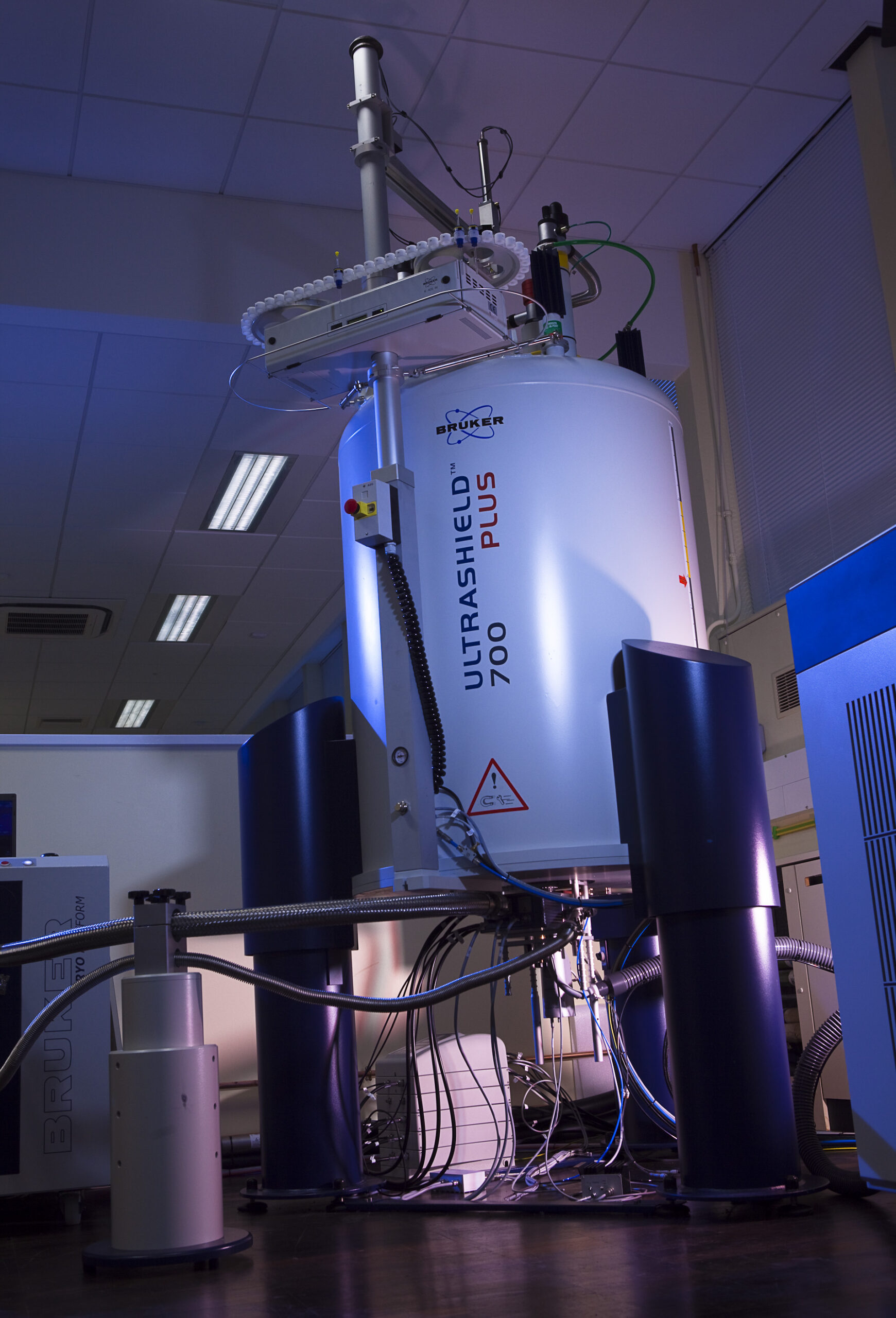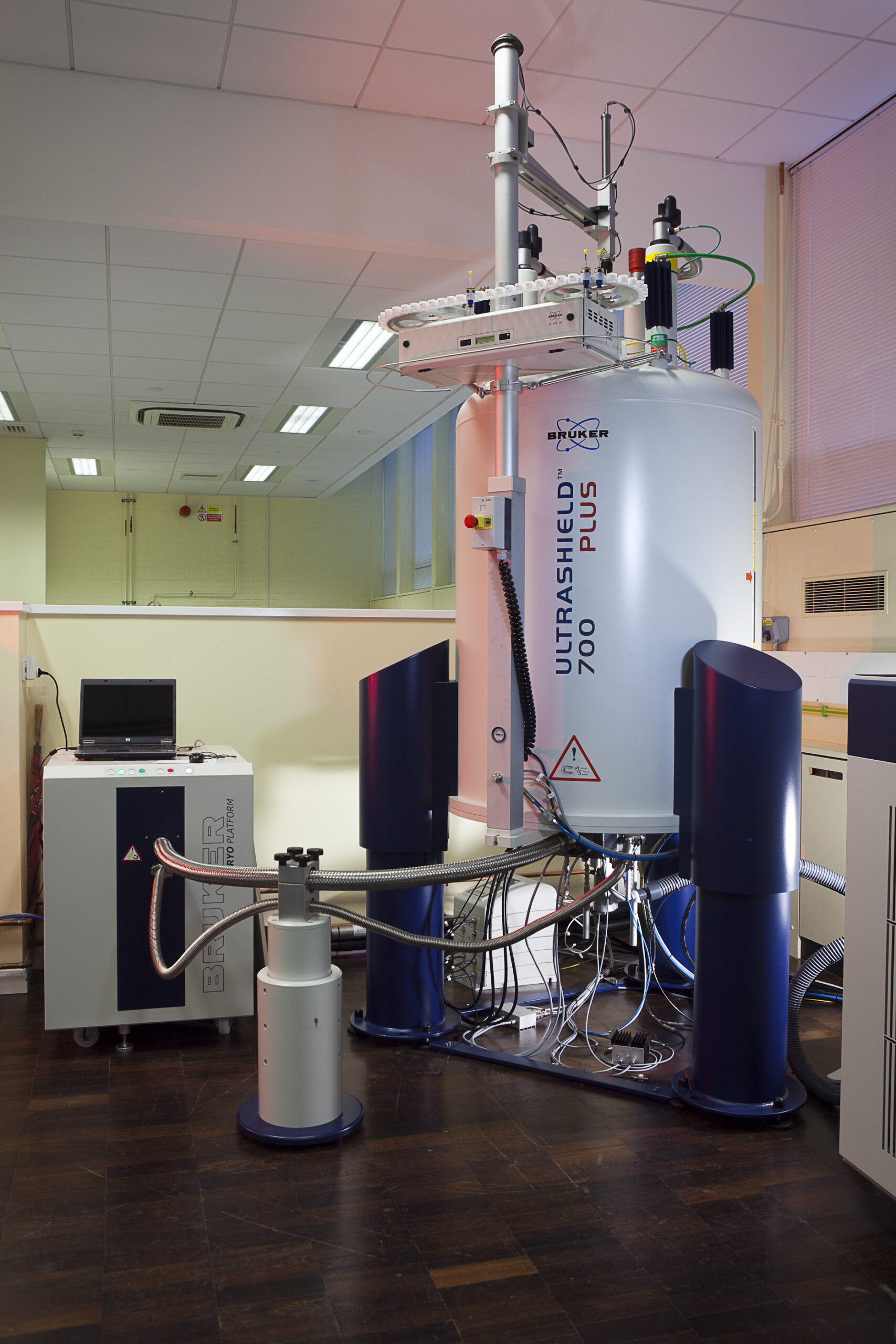
The AV700 is a three-channel NMR instrument running under TOPSPIN 3.6 (ICON NMR 4.2 for automation). It incorporates a 16.44 T Ultrashield Plus Long Hold Time magnet and is equipped with a 5mm 1H(13C/15N) inverse cryoprobe optimised for 1H observation (but also cooled on the 13C amplifier) as well as a 60-position BACS sample changer.
The design of this instrument makes it ideal for supporting projects at the interface between Chemistry and Biology. The very high sensitivity of the AV700, coupled with the availability of three acquisition channels, allows this instrument to be used for a number of applications which are not possible with the other NMR instruments in CAF. These include: solving the structures of biological macromolecules (such as proteins, DNA and oligosaccharides); observing the binding of small molecules to proteins; and identifying intermediates involved in biosynthetic transformations. Metabonomics research is another specialist NMR application which benefits greatly both from the increased dispersion and the high sensitivity of the AV700. The AV700 instrument is operated by the NMR staff and runs samples for both the Internal NMR service and the External NMR Service. For users within the University of Reading who submit samples via the Internal NMR Service, the primary function of the AV700 is to to provide experiments which are not available on the Open Access NMR Instruments. In addition, however, all the ICON NMR Experiments which are routinely available for the Open Access NMR instruments (e.g. 1H, 13C, DEPT, edited-HSQC, HMBC, COSY and NOESY) are also available on the AV700. Hence, a secondary function of this instrument is to allow investigation of samples which are only available in such small amounts that they could be not run in a reasonable period of time on either of the Open Access NMR Instruments.
Users from outside the University of Reading who wish to use the AV700 via the External NMR Service should first contact Research & Enterprise Services (RES) at the University of Reading.
Useful information
Safety in the NMR lab (PDF)
Training to use NMR instruments (PDF)
NMR Sample Preparation (PDF)
Experiments in ICON NMR (PDF)
Contact
For more information about the instrument and its availability contact:

